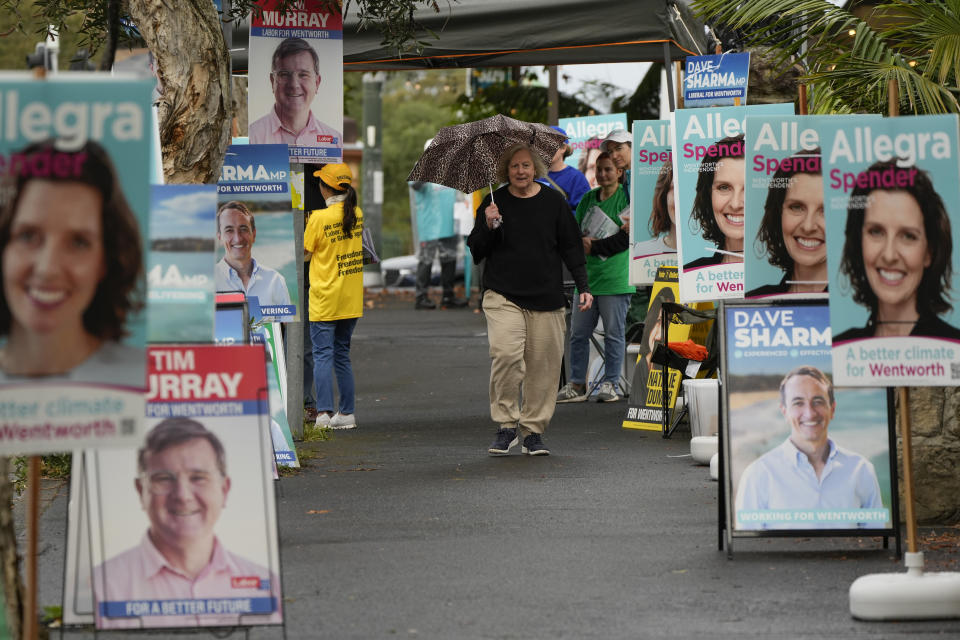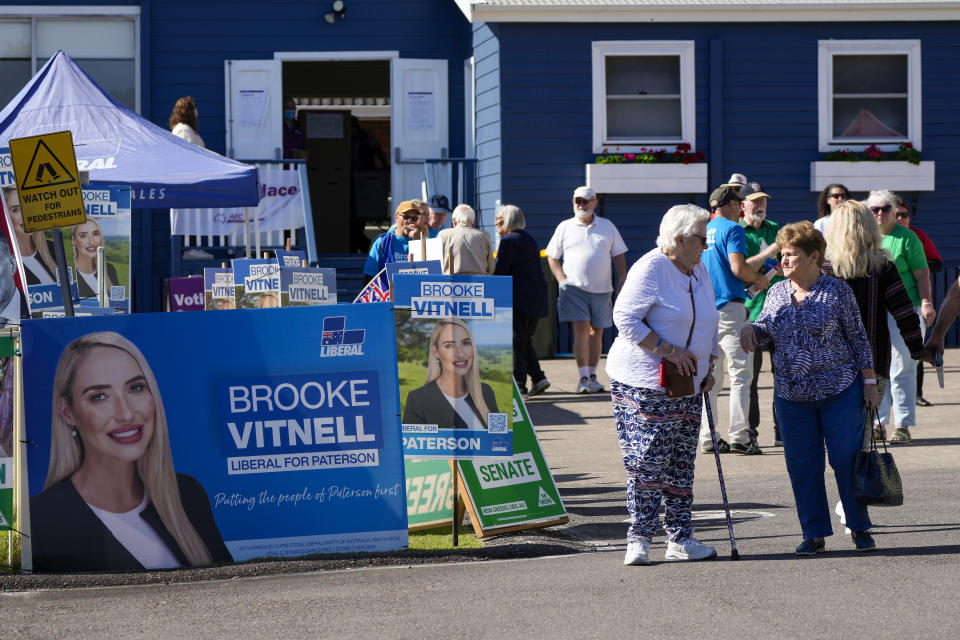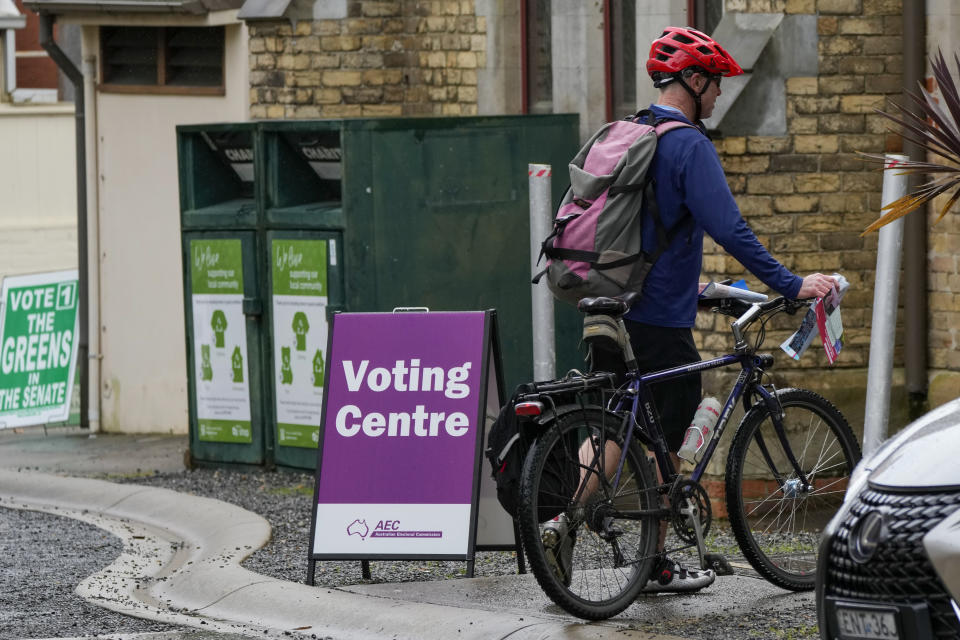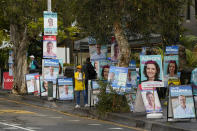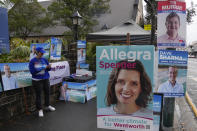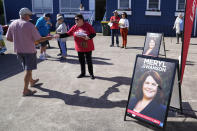Early voting begins ahead of Australia's May 21 election
CANBERRA, Australia (AP) — Early voting began Monday in Australia’s federal election with the opposition party hoping the first ballots will reflect its lead over the government in opinion polls.
Voters began casting their ballots at 550 voting stations around the country as two new opinion polls showed the center-left Labor Party opposition had extended its lead over Prime Minister Scott Morrison’s conservative coalition.
Voting is compulsory in Australia and almost 17 million adults in a population of 26 million people are expected to vote. Pre-poll voting is available to those unable to vote on May 21 for reasons including work or travel. People conscious of the risks of COVID-19 are expected to vote early to avoid the larger crowds at polling booths on May 21.
Opposition leader Anthony Albanese said government lawmakers were discouraging electors from voting early in the hope that Labor’s lead would evaporate before election day.
“The bells are tolling for the Morrison government because early voting starts today,” Albanese said. “We want people to participate in our democracy and to vote whenever is convenient."
Morrison said many voters had yet to decide which candidate they will support. “As Australians are going to those polls, they’re really starting to focus on the choice that they have to make and it’s a choice between strength, a strong economy and a weaker one under Labor,” Morrison said.
Morrison called the election for the last date available to him to maximize the time he had to discredit Albanese as a potential government leader. Using the same tactic in 2019, Morrison defied most opinion polls by leading his coalition to a narrow victory.
His coalition is now seeking a rare fourth three-year term.
More than 40% of votes were cast before the 2019 election date, and that proportion is expected to increase in the current election.
Many observers say the government’s popularity has been harmed by the Australian central bank’s decision last week to raise interest rates for the first time in 11 years to curb inflation. It was the first time that the Reserve Bank of Australia has lifted the cash rate during an election campaign since 2007.
Two weeks after the rate rise in 2007, Prime Minister John Howard’s conservative government was voted out of power, ending a reign of more than 11 years.
In the 2019 election, the combined vote for the major parties in the House of Representatives was its lowest proportion since World War II. The trend toward independent and minor party candidates is expected to continue at this month’s election.
Some polls are suggesting a rare hung parliament that would lead to Morrison or Albanese forming a minority government with the support of unaligned lawmakers.
Several seats held by Morrison’s conservative Liberal Party are being targeted by so-called teal candidates. They are independents seen as a combination of the Liberal Party’s official color, which is blue, and the color of the Australian Greens party.
The teal candidates are expected to win support of traditional conservative voters who are dissatisfied with the government’s climate change policies.
Both the government and opposition have set a target of net zero carbon gas emissions by 2050.
Morrison was widely criticized at the U.N. climate conference in Glasgow, Scotland, in November for failing to set more ambitious targets for the end of the decade.
The government aims to reduce emissions by 26% to 28% below 2005 levels, while other countries have made steeper commitments.
Labor has promised to reduce emissions by 43% by 2030.

 Yahoo Finance
Yahoo Finance 
